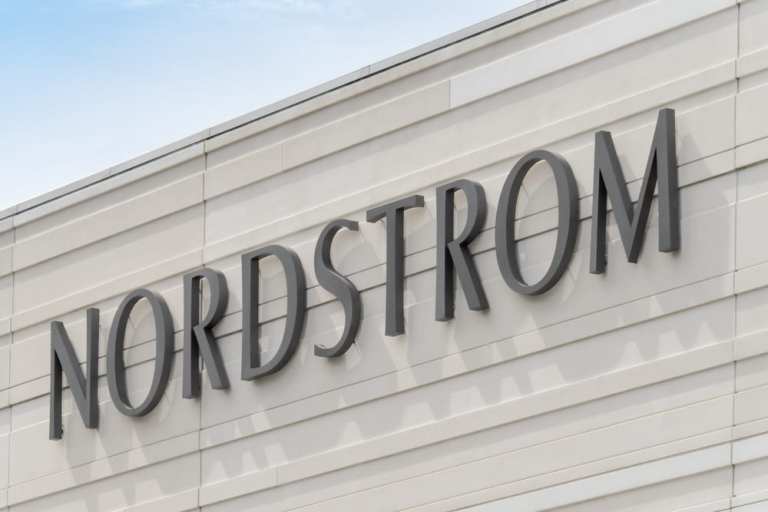
The digital shift has come to Nordstrom, and not a moment too soon. The department store chain earned a respectable first quarter as announced Thursday (May 28) through a mix of shrewd inventory management, financial reorganization and eCommerce strength.
While pointing out that it ended calendar 2019 in solid condition, the chain logged positive results in February in-store sales and ongoing growth of its $5 billion eCommerce business. The company temporarily shut down all stores on March 17 due to the pandemic, which had the expected weight on its overall results. The company says that its offline-online split is about 66 to 33 percent of sales. For the first quarter ended May 2, 2020, net sales decreased 40 percent from last year. Loss per diluted share of $3.33 included charges of $1.10 associated with the pandemic.
“We successfully strengthened our financial flexibility by increasing liquidity, lowering inventory by more than 25 percent from last year and significantly reducing our cash burn by more than 40 percent from March into April,” said Erik Nordstrom, chief executive officer of Nordstrom, Inc. “We’re entering the second quarter in a position of strength, adding to our confidence that we have sufficient liquidity to successfully execute our strategy in 2020 and over the longer term.”
On the earnings call late Thursday the CEO detailed some of the financial results and strategy going forward. He led with his strong card: eCommerce.
“We believe these unprecedented times that are only accelerating the changes that were already well underway with our customers including how they want to engage with digital and physical experiences,” he said. “The flexibility of our business model allows us to stay ahead of these changes as we serve customers through our two distinct brands Nordstrom and Nordstrom Rack. Across stores and online, this model resonates with customers shop across more than one of these touchpoints.”
He said spend among customers who shop both brands increases four to 11 times on average. The company’s off-price business continues to be its most effective customer acquisition strategy and nearly 30 percent of off-price customers cross-shop at full price. During the quarter eCommerce accounted for nearly 60 percent of sales (compared to 33 percent) while its mall-based full-line stores accounted for 38 percent. Partially as a reaction to the pandemic, and in anticipation of the continued digital shift, the company is closing 16 full-line stores and three Jeffrey specialty boutiques. Six of the 16 full-line closings are in California, with the rest spread evenly throughout the country.
Nordstrom also said the company was building its Trunk Club subscription model into a more “cohesive” styling offering, again to put the company on a more digital footing.
“Retail continues to evolve,” he said. “Our flexible model supports a continued shift from what was predominantly a mall-based business for the more diversified model that includes digital. Our market strategy remains our priority for gaining market share and increasing inventory efficiencies in our top markets. We’re bringing greater merchandise selection at faster delivery to customers while increasing engagement for our services by having a mix of full-line stores, Rack stores and local stores. Connecting these physical assets seamlessly with an online experience is a distinct advantage in serving customers on their terms.”
The company will also cut staff. It will combine full-price and off-price teams and reduce the size of its corporate headcount. Nordstrom said he also expects data and supply chain analytics to identify and act on potential omnichannel efficiencies.
Nordstrom currently has about 40 percent of its stores open. Most have been open less than two weeks, relying mostly on curbside pickup.
“We will continue to adjust and refine our approach as we learn more about this new environment,” Nordstrom said on the call. “We’ve also been incorporating feedback from our customers and are humbled by their support and response throughout this process. Most stores have only been open for less than two weeks and are located in our smaller markets. We’re seeing some encouraging early reads with overall sales trending slightly ahead of expectations. Our investments to connect our digital and physical experiences continue to serve us well, and the impact of COVID-19 is only emphasizing the importance of these capabilities.”